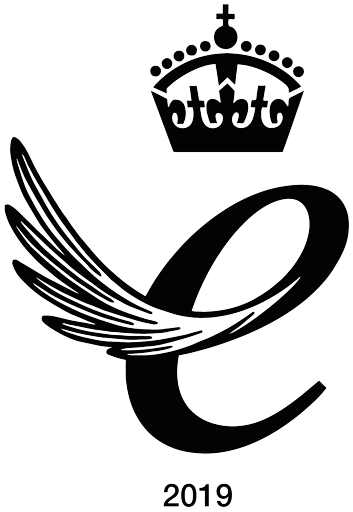This article originally appeared on the front page of the quarterly BCC Paper published by the British Chamber of Commerce in Lithuania. You can read it here.
David Clarke will be speaking at the BCCL’s ‘Breakfast Technical Briefing’ on April 27th about how to tackle the risks associated with handling foreign language documentation and managing global, multilingual and supply chains.
Upon reading the headline, you might ask yourself, “What is the connection between language services and anti-corruption procedures?”
Many companies that trade with overseas customers and suppliers, or through agents in foreign markets are awakening to a threat as old as trade itself: the danger of fraud through deliberate misinterpretation of information.
In our highly interconnected, street viewable market place, instantaneous communication has presented new opportunities to trade for both legitimate and illegitimate businesses. Like the first European traders that came face to face with a potential business partner in a distant land, there was a vital ingredient needed to ensure the parties could trust the other not to rip them off: good communication.
Given the historic importance of communication in any trade, it is surprising that so many companies do not know the risks associated with translating and interpreting words and behaviours.
Sadly, too many only understand the issues when something goes wrong, like the realisation that the foreign businessman you are dealing with is using fake details or has cloned a legitimate company to trick you into opening an account or parting with cash and goods.
The anguish it causes business owners and, more importantly, the significant losses they and their investors suffer can be catastrophic. It is estimated that companies lose the equivalent of 5% of their turnover to fraud and errors. The damage to business from fraud, corruption, data breaches and regulatory violations can ultimately destroy a company.
The tactics employed by traders across the centuries to communicate with foreign speaking clients and build trust are more relevant than ever, and for the first time these have been compiled into a structured model called AMLiss.
In our globalised society, client relations and partnerships inter-weave across multiple jurisdictions and are dependent upon different languages. Consequently, lawyers, accountants and HR professionals in particular are increasingly encountering foreign languages and cultural issues as they conduct due diligence on clients, staff and partners. Experienced professionals know the value of such checks. However, many smaller firms and novice traders seem to be unaware of the heightened risk that multilingual communication entails and this makes them a juicy new target for criminals.
Knowing your customer is not only good practice; it’s necessary practice. Firms — and especially those in the regulated professions — must factor language into the risk mitigation process. National and international regulatory bodies impose significant penalties on those who facilitate fraud and demonstrate serious lapses in their controls, as seen in the recent corruption scandal to embroil FIFA.
Scrutiny is not limited to legal and financial professionals when it comes to identifying fraud and money laundering. Businesses in all sectors should learn how to mitigate risk in this area. Any company dealing with foreign language materials faces an additional challenge by being exposed to the risk of fraud and money laundering. They could also face potential prosecution if they engage or do not have adequate procedures in place to prevent it.
“As more business is conducted internationally, an increasing amount of due diligence relates to foreign language materials be they documents on content on websites,” according to Arun Chauhan, Special Advisor on Economic Crime Litigation at Today Translations, who specialises in fraud and risk services. “How can you be sure if the person you’re dealing with is who they say there are? Something potentially incriminating can always look legitimate and innocent when you don’t understand the context.”
There are three principle tiers of multi-lingual due diligence that professionals should consider when handling sensitive documents in a foreign language. First, rather than requesting a comprehensive, word-by-word translation of all documents from and then proceeding to inspect the bulk of translated content, regulated professionals would be wise conduct a structured risk based approach in conjunction with a specialised language service provider.
The initial process involves examining foreign language documents in order to identify any potential fraud risks. For example, the appropriate compliance manager should highlight the most relevant information and what in particular may arouse suspicion. This prioritises the required information to be extracted for translation, thereby saving significant time and costs.
The linguist should also be encouraged to consult on the source material using their sectoral expertise and local knowledge. They could, for example, be assigned to identify, extract, and review the key facts for the compliance manager. This grants an additional layer of independence to the due diligence and vetting process. However, for these translations to hold up, they must be certified by the linguist or translation service provider.
Once the information has been relayed back to the compliance manager, the second step is to verify the facts. A linguist’s skills can once again be prized assets here. Their local knowledge, research and analytical skills can help in spotting irregularities that may indicate suspicious activity in documents or verbal conversations. This additional insight may be appropriate when information comes to light during Know Your Customer (KYC) checks or in the form of an observation made in the initial document review and translation.
Finally, anti-money laundering and compliance professionals, partners and client-facing staff should be trained to receive the necessary understanding and knowledge of the specific risks associated with multilingual documents, and how to effectively mitigate these risks going forward.
This knowledge sharing might include:
- Investigative tools and techniques that investigators and law-enforcement professionals apply
- Examples and case studies of best- (and worst) practice
- Criminal typologies employed that attempt to circumvent anti-corruption and AML procedures.
The BSI10500 British anti-bribery standard has become an essential form of certification particularly for British companies with operations abroad and wanting the assurance that their anti-bribery procedures are adequate.
A trusted language service provider with the necessary expertise is essential in achieving full cooperation and compliance, says Andrew Massey, former head of the City of London’s Overseas Anti-Corruption Unit:
“Due diligence, particularly within overseas legal and financial operations, must extend to what can be evaded through language. We know that misinformation and miscommunication often sows the seeds for cross-border criminal activity.”
Following the BS10500 standard will help ensure that you comply within all operations and across all jurisdictions. Vetting staff and suppliers is central to a good counter fraud and corruption strategy. Factoring language into the risk process is a crucial element to this.
Exceptional multilingual communication skills have been the keys to protecting businesses since the dawn of trade and will undoubtedly remain so for centuries to come.

